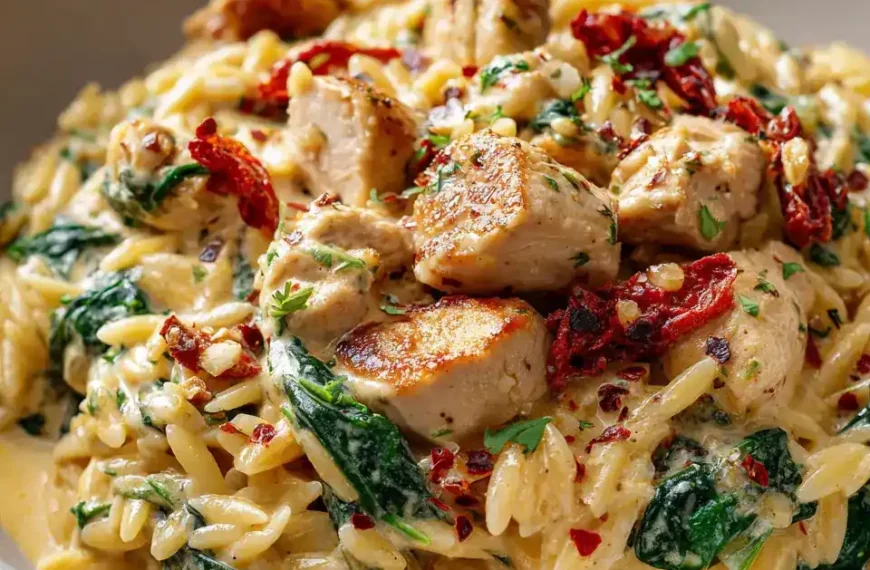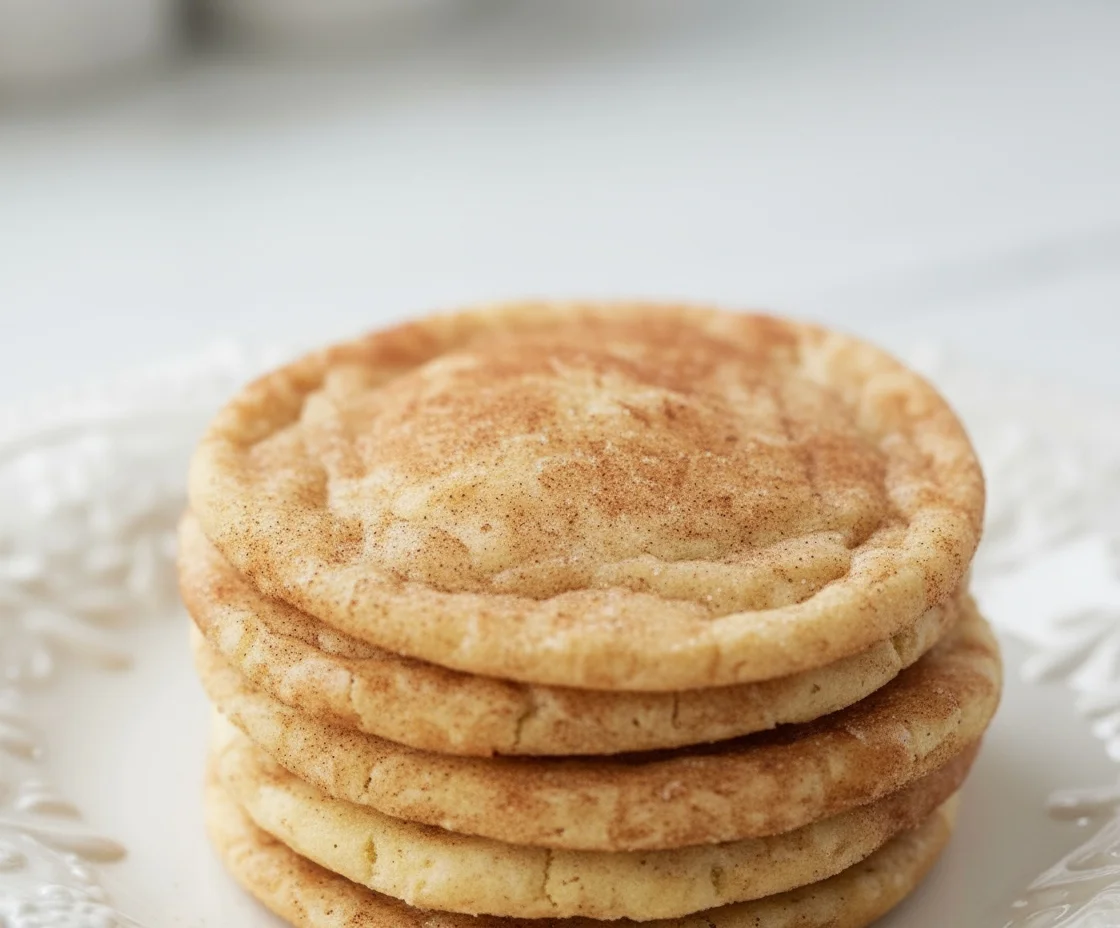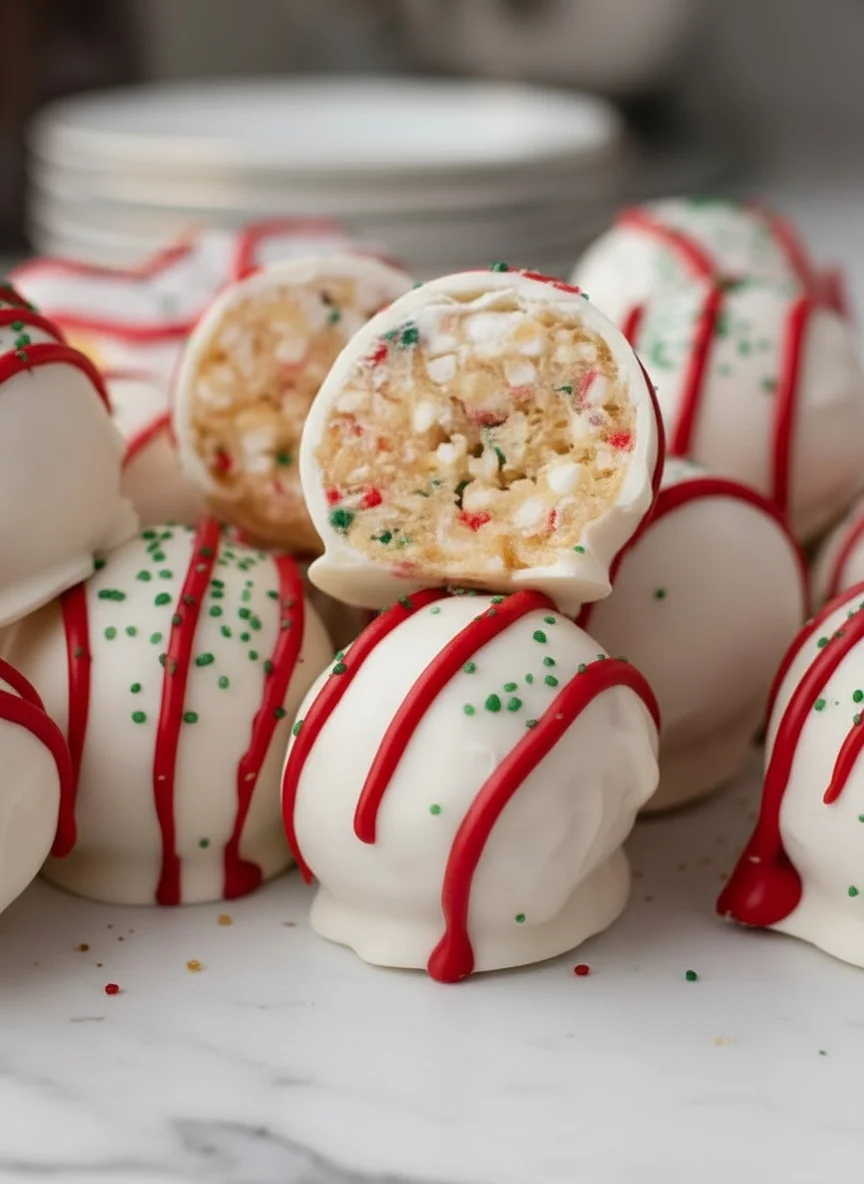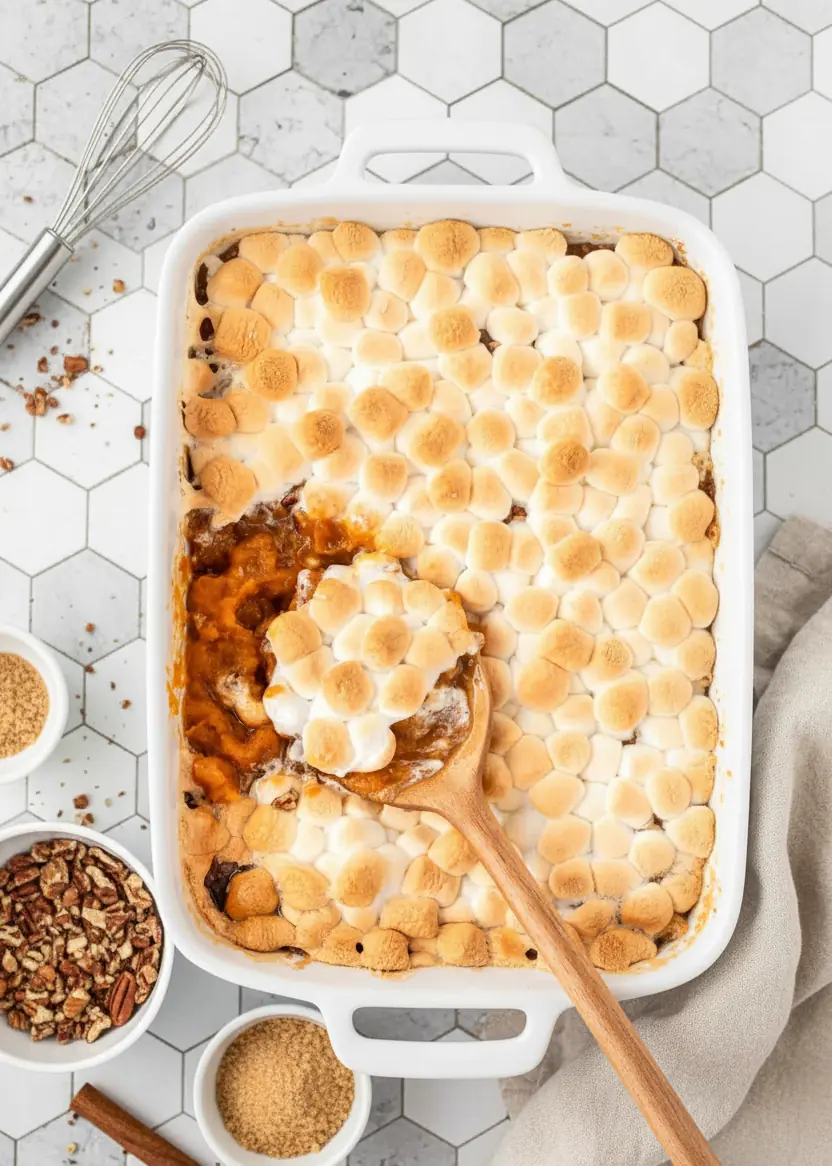There’s something about fall that makes you crave warmth—not just from a sweater or a blanket, but from the kind of dinner that hugs you from the inside. This baked feta and butternut squash pasta with sage and garlic is that kind of meal. It’s cozy, creamy, and rich in autumn flavor, yet simple enough to whip up on a busy weeknight. In this post, I’ll walk you through how this dish came to be a cold-weather favorite in my house, the ingredients that make it sing, and every step to get it just right—even if your only tools are a baking dish and a spoon.
My First Cozy Fall Dinner
Roasted Feta, Sweet Squash & a Kitchen Surprise
The first time I made baked feta and butternut squash pasta with sage and garlic, it wasn’t planned. I had a block of feta in the back of the fridge, a dusty butternut squash on the counter, and a night that felt too long for anything complicated. My twins were deep into a puzzle on the kitchen floor, and I wanted something warm—something that didn’t involve three pots or constant stirring.
I chopped the squash, tossed it with olive oil and salt, and tucked a block of feta right in the center of the baking dish. Thirty minutes later, the kitchen smelled like something far fancier than what I’d thrown together. The feta browned, the squash caramelized, and I stirred everything into some rotini I had on hand. I didn’t expect much. But when I added garlic, sage, and just a swirl of honey—wow. It wasn’t just dinner; it was a discovery. Cozy, creamy, salty-sweet, and finished with a peppery kick.
Even my kids—who think anything orange must be sweet potato—asked for seconds. That’s when I knew it was a keeper.
Why Baked Feta Pasta Took Over My Table
This isn’t just a viral recipe—it’s one of those meals that earns a permanent spot in your dinner rotation. Baked feta and butternut squash pasta with sage and garlic hits that perfect balance of rich and bright. The feta bakes into a creamy sauce without needing cream. The squash adds depth and sweetness, while sage and garlic bring the fall vibes front and center. You don’t need to babysit a pan. You don’t need special cheese or exotic herbs.
You need a baking dish, a block of feta, and about 45 minutes.
I’ve tried a lot of single-dish pasta bakes, but this one is pure comfort. It’s also forgiving. If you’re missing hot honey, regular honey with red pepper flakes works fine. No rotini? Try orzo or ditalini. It’s flexible, flavorful, and every bite tastes like it came from a cozy kitchen that’s full of love—even if you just tossed it together during nap time.
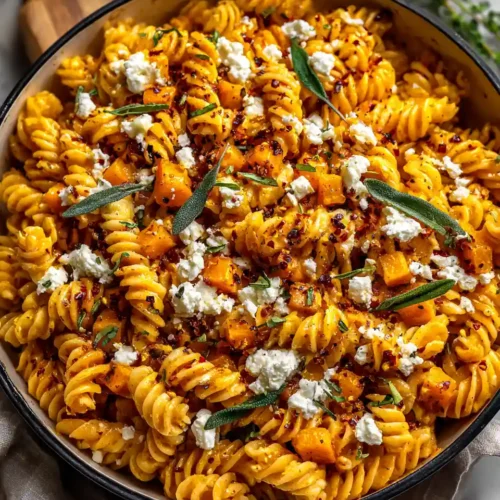
Baked Feta and Butternut Squash Pasta with Sage and Garlic
Equipment
- braiser
Ingredients
- 5 cups Butternut Squash about 1 large butternut squash
- ½ cup Olive Oil plus more for drizzling
- 2 hefty pinches Kosher Salt just shy of ½ tsp
- 1 hefty pinch Red pepper Flakes *optional*
- 1 8 oz block Feta Cheese
- 1 lb Pasta such as rotini orzo, or ditalini
- 10 leaves Fresh Sage minced
- 3 cloves Garlic finely minced
- 1 tablespoon Hot Honey regular honey is fine too
- Fresh Cracked Black Pepper
Instructions
- Preheat oven to 400F degrees.
- Toss butternut squash with olive oil, 2 hefty pinches of salt , and a few cranks of fresh pepper. Place the squash in a baking dish and put the block of feta in the middle. Drizzle the feta with a little bit of olive oil, red pepper flakes and add a fresh cracks of fresh pepper. Bake for 30 minutes.
- Once 30 minutes has passed, take the butternut squash feta mixture out of the oven and slightly move the butternut squash – be sure not to touch the feta. You just want to make sure the squash isn’t burnt on the bottom. Then, crank the heat up to 450 and bake for another 5-10 minutes or until the feta is slightly browned.
- Meanwhile, boil 1 lb of pasta in salty water. Once it’s al dente, strain and save 2 cups of the pasta water.
- Once the feta is browned, remove the baking dish from the oven and immediately stir in minced garlic, minced sage leaves, and honey. Now add the pasta and 1 cup of pasta water and stir everything together.
- If the pasta seems dry, add more of the reserved pasta water, little by little, until the sauce is creamy and smooth. Season the whole thing with more salt and pepper. You can also add more hot honey if needed!
Building the Base – Butternut, Feta & Flavor Layers
Roasting Feta and Butternut Squash Together
The heart of this dish lies in one pan. That’s where the magic starts. You begin by peeling and cubing the butternut squash into bite-sized pieces—think small enough to roast quickly but large enough to stay tender, not mushy. Toss those golden chunks with olive oil, kosher salt, and black pepper. If you like a touch of heat, add red pepper flakes—just a pinch.
Place everything in a large baking dish, and then create a small well in the center. Nestle your block of feta right there in the middle. Drizzle it with olive oil and crack some pepper on top. At this point, it might not look like much—but the oven transforms it all. Bake at 400°F for 30 minutes. The squash will soften and begin to caramelize, while the feta melts and bubbles, turning slightly golden around the edges.
After that first bake, take it out and gently stir just the squash—not the cheese. This helps loosen anything stuck to the bottom and keeps it from burning. Then raise the heat to 450°F and bake for another 5 to 10 minutes. This final blast is what gives the feta its irresistible golden top and caramelizes the squash even more. By the end, you’ve got a bubbling, golden, almost saucy base.
Garlic and Sage: When & Why They Join Late
Garlic and sage are bold, aromatic, and a little delicate. That’s why they’re saved for the end. Once the dish is out of the oven and still hot, sprinkle in the minced garlic and sage leaves. Stir them directly into the melty feta while everything is still warm. The heat gently cooks the garlic—enough to mellow its sharpness—while letting the sage release its earthy aroma without burning or crisping.
The difference this makes is striking. Instead of biting into raw garlic or burnt herbs, you get a silky, savory infusion that wraps around the sweet squash and tangy cheese. It’s not just seasoning—it becomes part of the sauce. This final step turns your roasted base into a deeply flavored foundation that clings beautifully to pasta.
Building the Base – Butternut, Feta & Flavor Layers
Roasting Feta and Butternut Squash Together
The heart of this dish lies in one pan. That’s where the magic starts. You begin by peeling and cubing the butternut squash into bite-sized pieces—think small enough to roast quickly but large enough to stay tender, not mushy. Toss those golden chunks with olive oil, kosher salt, and black pepper. If you like a touch of heat, add red pepper flakes—just a pinch.
Place everything in a large baking dish, and then create a small well in the center. Nestle your block of feta right there in the middle. Drizzle it with olive oil and crack some pepper on top. At this point, it might not look like much—but the oven transforms it all. Bake at 400°F for 30 minutes. The squash will soften and begin to caramelize, while the feta melts and bubbles, turning slightly golden around the edges.
After that first bake, take it out and gently stir just the squash—not the cheese. This helps loosen anything stuck to the bottom and keeps it from burning. Then raise the heat to 450°F and bake for another 5 to 10 minutes. This final blast is what gives the feta its irresistible golden top and caramelizes the squash even more. By the end, you’ve got a bubbling, golden, almost saucy base.
Garlic and Sage: When & Why They Join Late
Garlic and sage are bold, aromatic, and a little delicate. That’s why they’re saved for the end. Once the dish is out of the oven and still hot, sprinkle in the minced garlic and sage leaves. Stir them directly into the melty feta while everything is still warm. The heat gently cooks the garlic—enough to mellow its sharpness—while letting the sage release its earthy aroma without burning or crisping.
The difference this makes is striking. Instead of biting into raw garlic or burnt herbs, you get a silky, savory infusion that wraps around the sweet squash and tangy cheese. It’s not just seasoning—it becomes part of the sauce. This final step turns your roasted base into a deeply flavored foundation that clings beautifully to pasta.
Final Touches – Texture, Balance, and Serving Ideas
Hot Honey & Pepper: Sweet Heat Finishes
What takes this baked feta and butternut squash pasta with sage and garlic from good to unforgettable? A drizzle of hot honey at the end. Once the pasta is tossed with the roasted squash and melted feta, swirl in a tablespoon of hot honey. The heat from the dish softens it instantly, spreading gentle sweetness and a hint of spice through every bite. This single ingredient balances the saltiness of the feta and enhances the natural sweetness of the squash.
Don’t have hot honey on hand? You’re not out of luck. A spoonful of regular honey stirred with a pinch of cayenne or red pepper flakes gives you a very similar effect. It’s not about making the pasta spicy—it’s about layering in warmth. Cracked black pepper at the end adds bite, and a final taste test is key. Adjust salt, add more honey if needed, or toss in a few more sage ribbons if you love that herby edge. The flavors deepen as the dish sits, so give it a minute before serving.
How to Serve It & Make It a Meal
This pasta is more than a side—it’s a full meal in a bowl. But if you want to round it out, here are a few simple ideas. A crisp salad with lemony vinaigrette cuts through the richness. Roasted Brussels sprouts or garlicky green beans bring a bit of crunch and color to the table. For extra protein, stir in shredded rotisserie chicken, browned crumbled sausage, or top with a jammy soft-boiled egg.
It’s also great for gatherings. Serve it family-style in the same dish it baked in—it looks rustic and inviting. Leftovers hold up beautifully, too. Just add a splash of water before reheating to revive that creamy texture. Whether it’s Sunday supper or a cozy weeknight treat, this dish delivers every single time.
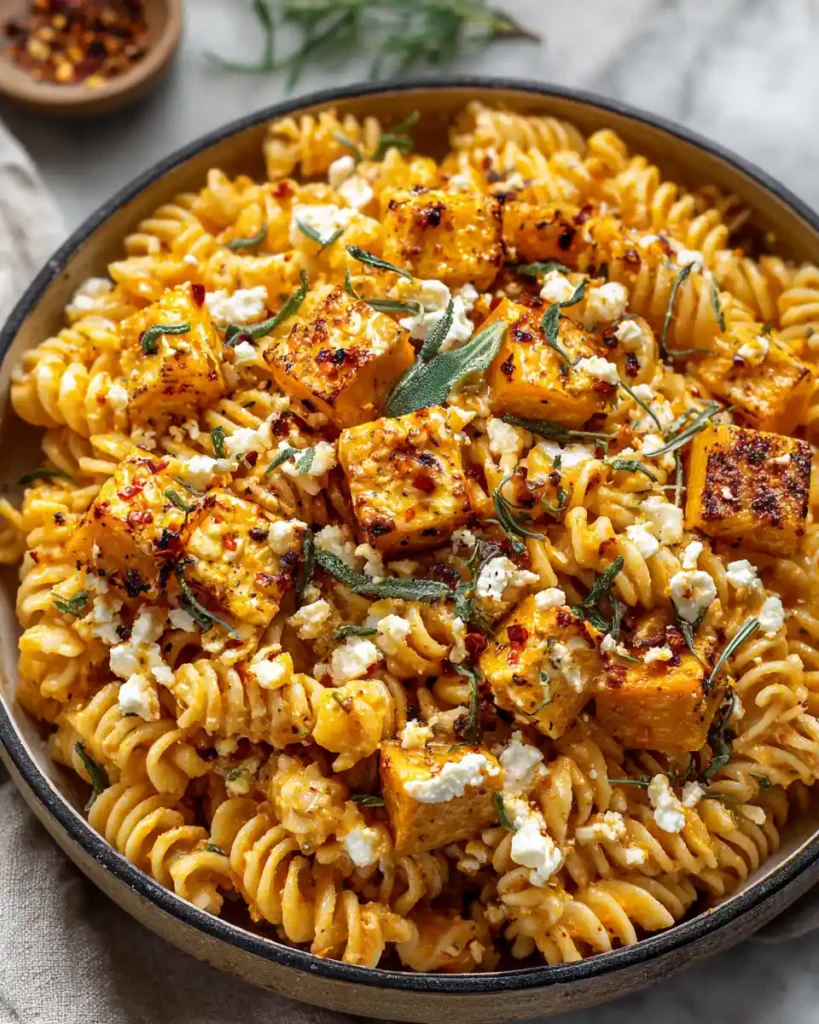
FAQs about Baked Feta and Butternut Squash Pasta with Sage and Garlic
Can you bake feta with butternut squash together for pasta?
Yes, and it’s one of the easiest ways to create a rich, creamy sauce with almost no effort. The feta softens and browns as the squash roasts, creating a flavorful base that melts beautifully into cooked pasta.
What pasta works best with baked feta and squash?
Short pasta shapes like rotini, orzo, and ditalini work best because they hold onto the sauce and bits of roasted squash. Avoid long strands like spaghetti, which don’t coat as evenly with the creamy feta mixture.
How do you make creamy pasta without cream?
In this recipe, creaminess comes from baked feta and starchy pasta water. The heat softens the cheese, while the reserved water helps emulsify everything into a smooth, rich sauce—no dairy-based cream required.
Can I substitute honey with something else in savory pasta?
You can skip it if needed, but honey adds important balance. If hot honey isn’t available, regular honey with a pinch of red pepper flakes or cayenne will do. Maple syrup is another option, but use sparingly to avoid overpowering sweetness.
Conclusion
Baked feta and butternut squash pasta with sage and garlic is the kind of dish that checks all the boxes: cozy, simple, and big on flavor. You don’t need a lot of prep or expensive ingredients—just a few pantry staples and a good baking dish. Whether you’re cooking for your family, prepping for the week, or looking for something satisfying to warm up a chilly night, this pasta delivers. One bite, and you’ll understand why it’s a recipe worth saving—and repeating.







